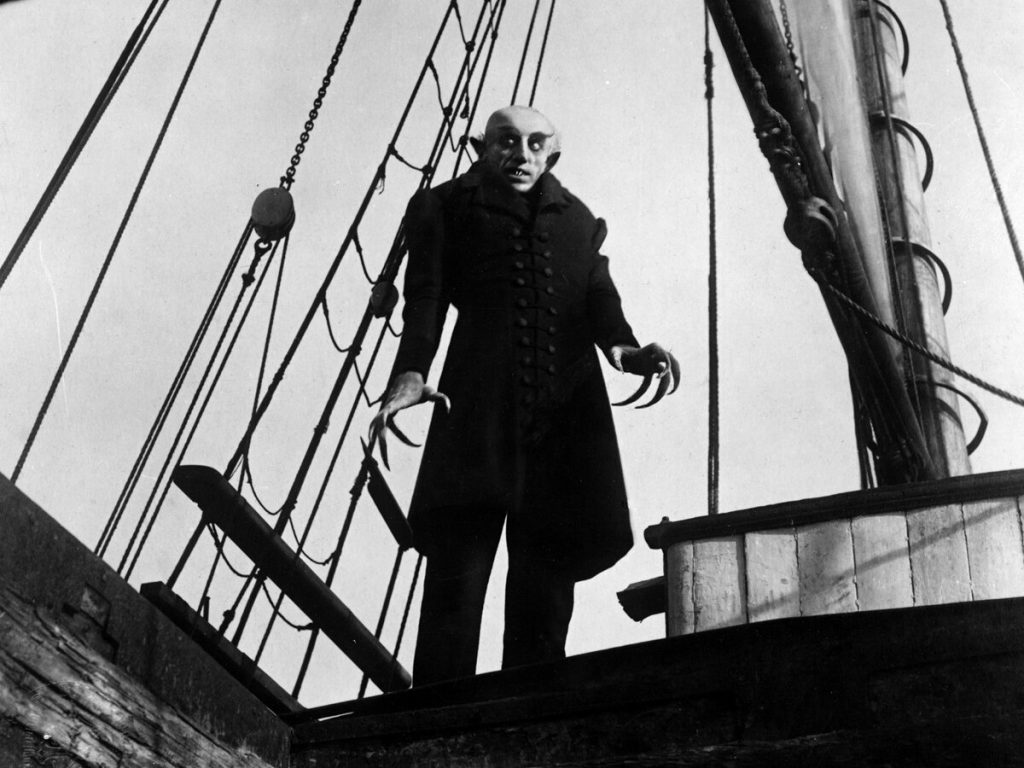
Nosferatu (1922), directed by F.W. Murnau, remains one of the most influential silent horror films ever made. This German Expressionist masterpiece introduced audiences to the eerie vampire Count Orlok and set the foundation for the horror genre’s evolution. This Nosferatu 1922 movie analysis dives deep into the film’s innovative techniques, haunting atmosphere, and its lasting legacy.
🌙 Why Nosferatu Still Captivates Audiences: A Nosferatu 1922 Movie Analysis
Unlike modern vampire tales, Nosferatu uses stark visuals and shadow play to create a deeply unsettling mood. The film’s power lies in what it suggests rather than shows, using silence and expressionistic imagery to unsettle viewers. This approach makes the horror timeless and distinct from later, more dialogue-driven films.
🎨 Key Elements of Nosferatu’s Cinematic Brilliance
🎭 Expressionist Visual Style
Nosferatu is a flagship example of German Expressionism, where sets and lighting emphasize emotional and psychological states. Distorted angles and high-contrast shadows give the film a surreal, dreamlike quality that heightens suspense and dread. This technique transforms ordinary scenes into ominous, threatening environments.
👹 The Haunting Performance of Count Orlok
Max Schreck’s portrayal of Count Orlok is chilling and unforgettable. His gaunt frame, elongated fingers, and unsettling movements create a monster far removed from the romanticized vampires of later decades. This portrayal firmly establishes the vampire as a figure of pure dread, a legacy that influences horror portrayals even today.
🤫 Silent Storytelling’s Impact
The absence of dialogue in Nosferatu forces the story to be told visually, making every gesture, facial expression, and shadow important. This silent storytelling creates a unique pace and tension, pulling audiences into a haunting world where fear lingers in every frame.
🕰️ Historical Context and Its Influence: Insights from a Nosferatu 1922 Movie Analysis
Created in post-World War I Germany, Nosferatu reflects the anxieties and social upheaval of its time. The vampire’s association with plague and death echoes the real fears of disease and destruction that were fresh in the public consciousness. This historical backdrop gives the film additional layers of meaning beyond its supernatural story.
🎬 How Nosferatu Shaped Horror Cinema
The film’s influence stretches far beyond its era. It introduced techniques and themes that became staples of the horror genre—particularly the portrayal of vampires as terrifying creatures rather than romantic figures. Its use of shadow and atmosphere has inspired countless directors and films, cementing its place as a cornerstone of cinematic horror.
✅ Conclusion
Nosferatu (1922) is more than just an early horror film; it’s a groundbreaking work that continues to inspire filmmakers and frighten audiences nearly a century later. This Nosferatu 1922 movie analysis shows how its artistry and themes have made it a timeless classic in horror history.
❓ Frequently Asked Questions (FAQ)
Q1: Why is Nosferatu (1922) considered a horror masterpiece?
Because of its innovative use of shadow, expressionist visuals, and the chilling portrayal of Count Orlok, which influenced the horror genre deeply.
Q2: How does Nosferatu differ from other vampire films?
Unlike later romanticized vampires, Nosferatu’s Count Orlok is portrayed as a monstrous, terrifying figure rooted in fear and plague imagery.
Q3: What makes silent films like Nosferatu effective in horror?
Silent films rely on visual storytelling, which makes every frame, gesture, and shadow crucial for building suspense and atmosphere.
Q4: How did historical context influence Nosferatu?
Post-WWI anxieties about death and disease are reflected in the film’s themes, making its horror resonate more deeply with contemporary audiences.
Q5: Where can I watch Nosferatu (1922)?
Nosferatu is available on several streaming platforms and classic film archives, including public domain sources like the Internet Archive.




